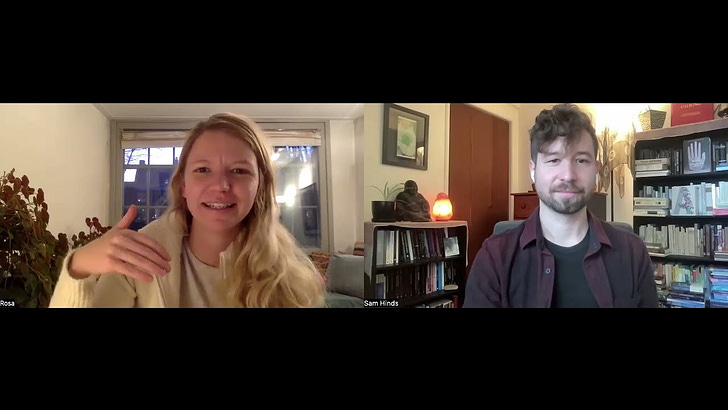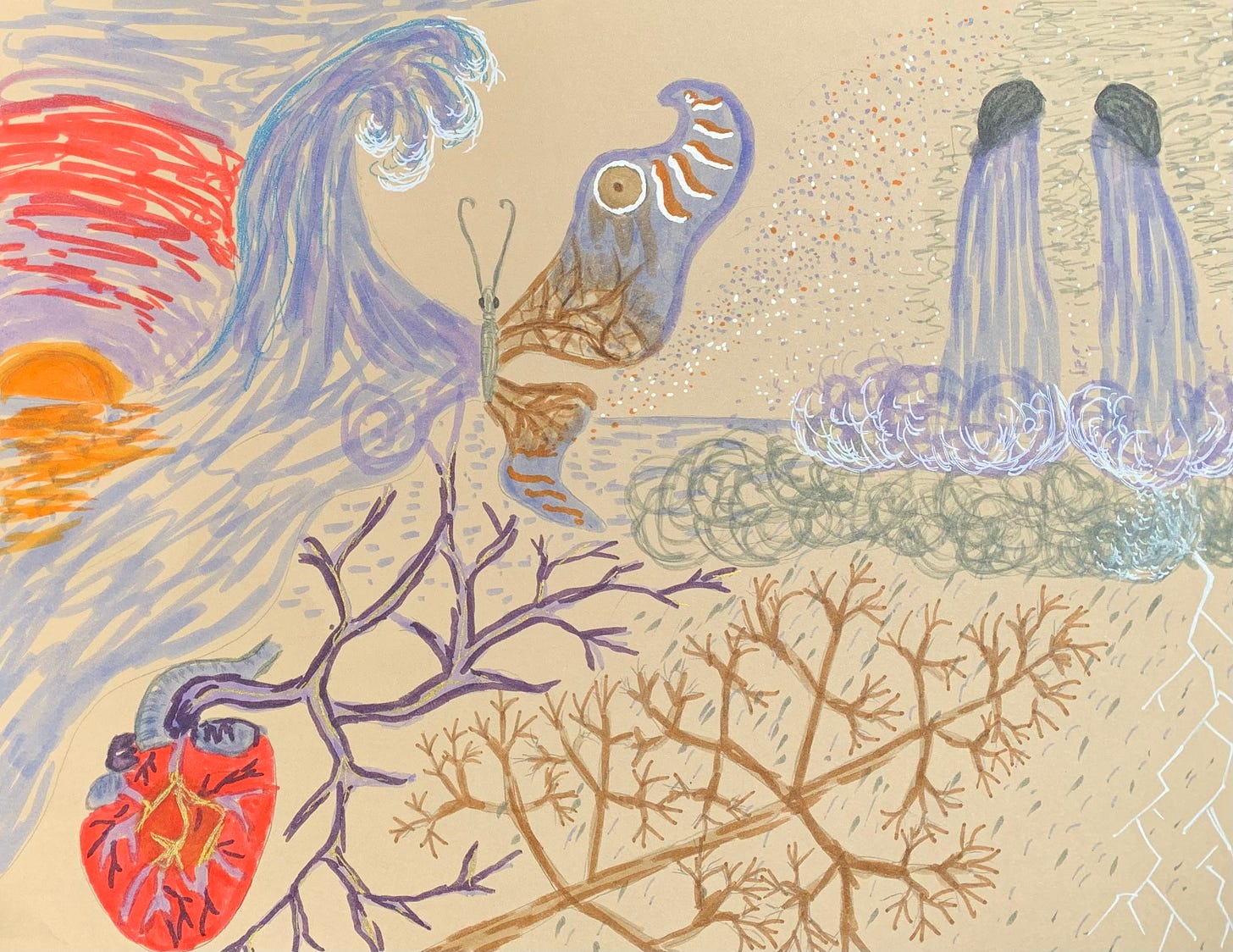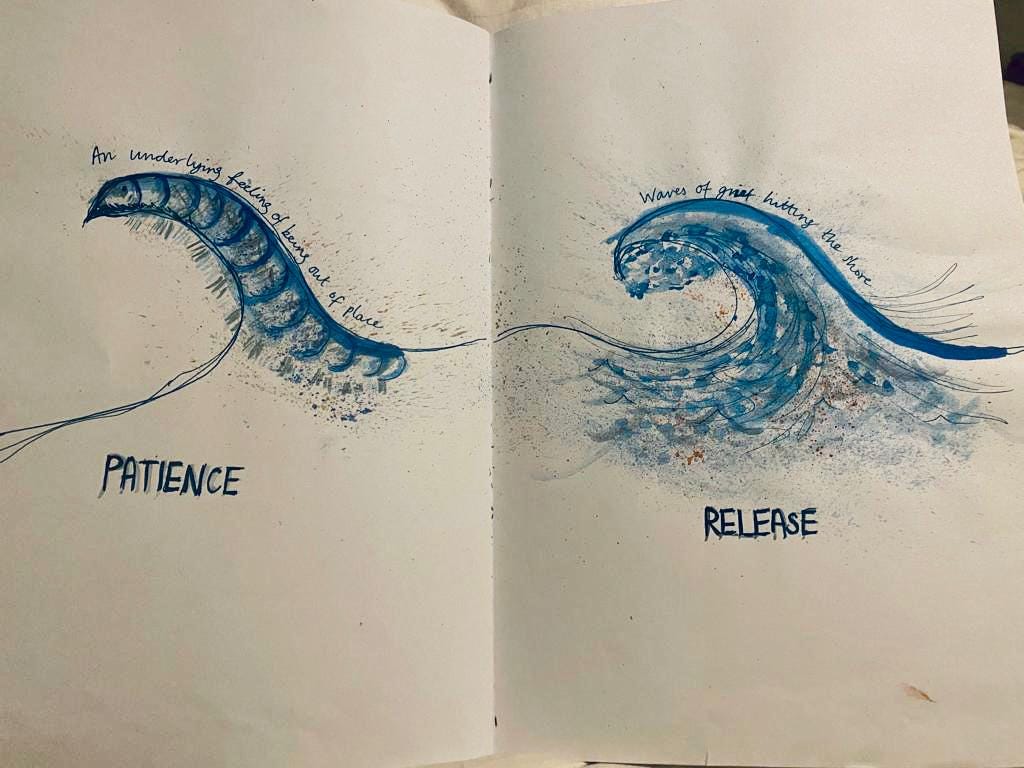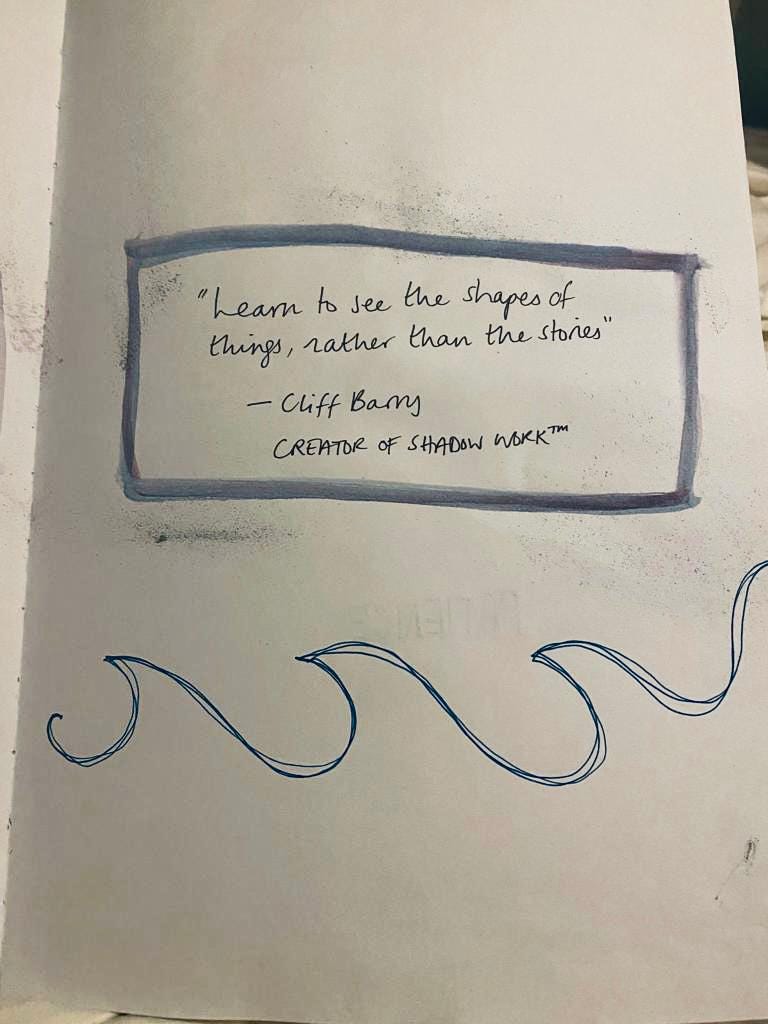Entering into dialogue with my friend Rosa Lewis has consistently been a fun and joyful experience for me. It feels like catching and surfing contrapuntal waves of meaning, unfolding through the rhythm of call-and-response.
Our discussion below, exploring creative process and its mysterious relationship with time, potentiality, and ever-present wholeness, might be my favorite exchange so far…
Appropriate to the themes of the dialogue itself, this conversation carries resonances of thematic echoes dispersed across time, building upon our previous conversation for Rosa’s still-growing awakening course and also hearkening back to elements from our dialogue about the imaginal realm.
I feel compelled to add some additional commentary below…
I. Alright Then, Let’s Talk About The Telepathy Tapes
Speaking of echoes, I now find it funny that I felt moved to mention The Telepathy Tapes podcast at the outset of our conversation because, the day following, I stumbled into this interesting critique by Jon Ogden, delving further into the details and history of the facilitated communication methods covered in the podcast.
The following day, I encountered Seth Jordan’s very interesting counter-critique.
The ontological dispute getting stirred up by the podcast makes it all the more interesting to me as a cultural artifact. Skeptics who approach the podcast see wishful thinking guiding hasty and incautious conclusions, facilitated by the limited format of the auditory presentation sprinkled with sensationalized production. Apologists suspect that a foregoing and stubborn allegiance to scientific materialism leads to a selective focus that disregards the full range of data, and ultimately to explanations that are arguably more astonishing than telepathy itself.
It brings to mind William James’s distinction between tough- and tender-minded individuals. James pointed out how conclusions thought to be the result of careful reflection upon direct experience are often swayed by the preferential leanings of one’s own personality style.
Interestingly enough, speaking of William James, he sincerely considered the possibility of telepathy based on phenomena that he witnessed long before the subject became associated with autistic people through facilitated communication.
Jean Gebser, based on his own research, seemed even more convinced of the reality of telepathy than James had been.
“Today telepathy is based on a mass of authenticated data; even the most hard-bitten rationalist can no longer deny its existence. It is explained in part by an elimination of consciousness, which obscures or blacks out the ego and causes it to revert to a spaceless-timeless ‘unconscious participation’ in the group soul. Clairvoyance may be interpreted in the same way.”1
Gebser ascribed this capacity for telepathic rapport to the primordial magic structure of consciousness that, with the birth of the modern mind, was submerged into what we today call “the unconscious.”
While Rosa and I weren’t ultimately talking about telepathy, the territory that we did traverse carries resonances with the temporal phenomenology that Gebser likewise linked to the magic structure. This form of time, experienced as an entangled weave of dispersed moments in mutual resonance, bears relevance for the emerging integral structure.
This brings me to my next point.
II. On “Exfoliation”
I feel moved to add some remarks concerning my use of the word exfoliate toward the end of the dialogue. Yet again, Gebser’s influence looms large here.
The most common association with the word today involves scrubbing away dead skin, which tracks with the Latin roots of the word: ex (“off, out of”) and folium (“leaf”).
To “exfoliate” often means “to strip of leaves.”
The term shows up seven times in the English translation of The Ever-Present Origin, and the peculiar way in which Gebser employs it has made a deep and lasting impression on me.
We fail to grasp Gebser’s intended meaning if we take the root ex- in the typical sense of “off,” suggesting a removal or stripping away.
Gebser’s “exfoliation” is a foliating out of, much in the way that a sprout sends a leaf out of a seed, or a flower blossoms out from a bud which grows out from a branch.
The various structures of consciousness exfoliate from origin, and with the turning of each leaf revealing a new structure, a new form of time blooms from that ever-present source, more primordial than time itself.
Yes, the exfoliation of new structures has tended to result in an eclipsing, or covering over, of the others. Hence, the “entangled present” of magic time, for the modern person, typically remains unconscious.
For the emerging integral consciousness, the various consciousness structures begin to grow together as our experience of time undergoes a radical opening.
This exfoliation, presently underway, marks the turn that gathers together and integrates all leaves turned thus far—opening to time freedom.
“Time-freedom is the conscious form of archaic, original pre-temporality.
Time-freedom can be realized by achieving each of the previous time-mutations from archaic pre-temporality. By granting to magic timelessness, mythical temporicity, and mental-conceptual temporality their integral efficacy, and by living them in accord with the strength of their degree of consciousness, we are able to bring about this realization. This concretion of the previous three exfoliations of original pre-temporality instantaneously opens for us pre-conscious timelessness.
As such, time-freedom is not only the quintessence of time … but also the conscious quintessence of all previous temporal forms. Their becoming conscious—in itself a process of concretion—is also a liberation from all of these time forms; everything becomes present, concrete, and thus integrable present. But this implies that preconscious origin becomes conscious present; that each and every time-form basic to the one-, two-, and three-dimensional world is integrated and thereby superseded.
In—or rather through—time-freedom the foundations or bases become transparent right down to the original and pre- conscious pre-temporality.2
The lure to creativity becomes one of the central domains where we begin to experience this temporal mutation. If time, in its many modalities, exfoliates out of origin, then creativity echoes origin’s primordial act in exfoliating through time.
“In creativity, origin is present.”3
III. Images
Finally, here are some images Rosa and I created following the Communal Reverie session we did together in service to her awakening course, as mentioned in our dialogue.
I made mine (above) as a simple attempt to capture some traces of the original, living imaginal encounters.
Rosa’s (below) capture the way the imaginal phenomena continued to work on her, and on her relationship to the creative lure of her awakening course, throughout a span of the time following the session…
Jean Gebser, The Ever-Present Origin, p. 55.
While Gebser added a footnote citation for the “mass of authenticated data” to which he alludes, it simply refers back to a still untranslated earlier work of his own (Abendländische Wandlung, “Western Transformation”). Unfortunately, as an Anglophone reader, my present level of interest doesn’t outweigh the required effort.
The Ever-Present Origin, p. 356.
The Ever-Present Origin, p. 313.








